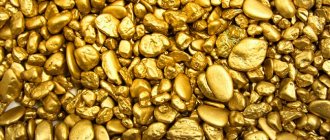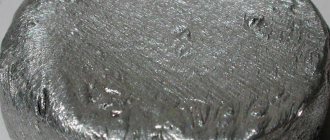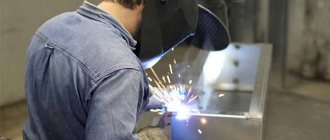The welding torch is designed for controlled mixing of combustible gas with oxygen and obtaining a stable welding flame of the required power. For gas welding, the welding station is equipped with an oxygen cylinder, a cylinder with flammable gas (acetylene or propane), two reducers, a hose with a diameter of 6.3 mm or 9 mm, two fire-stop valves KOC and KOG, to protect against backfire, and the welding torch itself.
The torches are divided according to the type of combustible gas used, the thickness of the metal being welded and are equipped with different types of tips.
What is a gas burner?
Gas torches are indispensable assistants and tools for many types of gas-flame processing of metals - gas-oxygen welding, soldering, heating.
To choose the burner that is most suitable for your type of work, you need to at least understand a little about the variety of design features, as well as the functional and technical capabilities of gas burners. Most often, burners are divided into three main types according to the combustible gas used:
- Welding torches operating on an acetylene-oxygen combustible mixture;
- Welding torches operating on a propane-oxygen combustible mixture;
- Propane gas-air burners.
Where can I buy
A gas torch and equipment for gas welding can be purchased at one of our warehouses in Moscow or in the company’s online store. You can receive your order either by ordering delivery or by pickup during business hours. All warehouses are open on weekdays from 9-00 to 17-00, and on Saturdays from 10-00 to 14-00.
Delivery
When ordering goods with a total weight of up to 6 kg, the delivery cost is 400 rubles ; you can order such delivery by selecting a gas torch and other welding equipment in the Catalog section.
Delivery costs exceeding 6 kg depend on your location. Regular delivery in Moscow costs from 1,200 rubles . Delivery can be ordered by phone: +7 (495) 921-34-24 . Delivery orders are open on weekdays from 9-00 to 17-00, on Saturdays from 10-00 to 14-00, and on the website - around the clock .
Welding torches operating on acetylene-oxygen combustible mixture
Oxy-acetylene welding uses the heat generated by the combustion of acetylene in oxygen. In terms of power, such burners are found in two common types: G2A and G3A (low and medium power burners). G2A torches are used when welding thin metal. The kit usually contains several tips of different sizes.
Particularly worth highlighting from this series are burners with a full complement of solid-drawn copper tips. The presence of solid-drawn copper tips in the G2A-mini torch kit allows you to carry out welding work in hard-to-reach places such as corner joints, where a conventional torch would be useless.
And the thickness of the copper tubes of the tips ensures a long operating time without overheating, due to good heat dissipation from the tip.
Soldering instructions
The process of soldering aluminum parts does not have its own distinctive features; it is carried out in the same way as with steel or copper.
The algorithm of actions is as follows:
- the soldering area is degreased and cleaned;
- the parts are fixed in the desired position;
- the connection area heats up;
- touch the solder rod (containing active flux) to the joint. If flux-free solder is used, then flux is applied to destroy the oxide film, after which a solid piece of solder is rubbed over the soldering area.
A brush with steel wire bristles is also used to break down the aluminum oxide film. This simple tool is used to rub molten solder over an aluminum surface.
Soldering aluminum - complete video instructions https://www.youtube.com/watch?v=ESFInizLE9U
Acetylene welding torches
Article: 001.020.781 Acetylene torch G2-4M-01 (No. 0A, 1A, 2A, 3A) Manual welding torch of equal pressure for welding metals up to 4 mm thick.
Equipped with solid-drawn copper lugs No. 0A, 1A, 2A and 3A. Price: RUR 2,552
Article: 001.020.706 Acetylene burner G2A “Baby” (No. 0A, 1A, 2A, 3A)
Injection torch for welding metals up to 4 mm thick. Equipped with brass welding tips with copper mouthpieces No. 0A, 1A, 2A and 3A.
Price: RUR 2,701
Article: 001.020.703 Acetylene burner GZA (No. 4A, 5A)
Injector torch for welding metals up to 11 mm thick. Equipped with brass welding tips with copper mouthpieces No. 4A and 5A.
Price: RUR 2,406
Article: 001.020.702 Acetylene burner G2A MINI (No. 0A, 1A, 2A, 3A)
Injection torch for welding metals up to 4 mm thick. Equipped with solid-drawn copper lugs No. 0A, 1A, 2A and 3A.
Price: RUR 2,601
Article: 001.020.701 Acetylene burner G2A (No. 2A, 3A)
Injection torch for welding metals up to 4 mm thick. Equipped with brass welding tips with copper mouthpieces No. 2A and 3A.
Price: RUB 1,984
Process technology during work execution
When soldering aluminum, an oxide film is formed on the surfaces of parts. If you perform soldering without first removing the oxide film, the seam will not have the necessary strength. The film forms on the metal surface very quickly, so it cannot be removed by mechanically cleaning the workpiece.
Torch angle during aluminum soldering
Specialized fluxes are used to remove the oxide film. They block the access of oxygen to the soldering site. Fluxes used when soldering aluminum contribute to the rapid melting of the filler wire and its better adhesion to the parts. It is possible to prepare the metal for soldering using chemicals. In this case, a solution is first prepared and applied to the workpieces.
After mechanical cleaning and chemical treatment of aluminum, the workpieces are heated to high temperatures. The degree of heating is regulated by the intensity of the flame. The filler wire is fed to the heated joint. Its temperature is lower than that of the metal being soldered. The solder melts and fills all the irregularities and micropores located on the surface. As the solder cools, it hardens, creating a strong weld.
Welding torches operating on propane-oxygen combustible mixture
GZU propane torches are also used for soldering ferrous and non-ferrous metals, and less often for non-critical welding seams of ferrous metal of small thicknesses up to 3 mm. This is due to the lower temperature of the propane-oxygen mixture (up to 2,100°C), which does not allow welding to be performed on equal terms with torches running on acetylene. Nevertheless, such burners are widely used for heating and soldering non-ferrous metals with high-temperature solders.
The compactness of such welding torches, excellent operation of the valve units, allowing for “fine” adjustment of the gas supply, modern, thoughtful design - all this makes the torches convenient and reliable and allows you to work with them both in open space and indoors.
Functions performed by flux
In order for aluminum or its alloy to interact with the solder, it is necessary to destroy the film on its surface at the site of the future connection. This function is performed by flux, a substance capable of:
- remove oxide formations;
- normalize the surface tension of the metal;
- improve solder distribution.
When choosing a flux, you must carefully study the attached annotation. It indicates what metal the product is intended for and the type of solder with which it interacts most effectively.
Among the domestically produced active fluxes for do-it-yourself aluminum soldering, the following brands are recommended:
- F 61 – when working with aluminum alloys and in low temperature conditions.
- F 64 – for large and massive parts.
- F 34A - when using refractory solders that require high temperatures.
A foreign analogue that is popular in our country is Castolin Alutin 51L. The greatest efficiency is achieved when interacting with solders from the same company.
Propane gas-air burners
All burners in this series are injection-type burners with forced supply of combustible gas and air intake from the atmosphere. A propane-butane mixture is used as a combustible gas in such burners.
GV gas-air burners are designed for heating products made of ferrous and non-ferrous metals, non-metallic materials, as well as for melting the surface of bitumen roll material in the production of waterproofing.
They are often used for heating when bending plastic pipes, drying reinforced concrete panels, foundry molds, brickwork, all thanks to a wide range and the possibility of using special nozzles.
For example, for large volumes of work on laying rolled roofing materials, it is recommended to use a 2-flare gas-air burner with a wide coverage of the heated area.
For heating and heat treatment of parts made of various materials, burners with three flasks of the GV-3V series and a GV-3V-01 burner with three special nozzles are used (to form a “flat torch”, to form a thin, “sharp” flame, flask ø 25 mm) .
Those who need the ability to solder “in the field” should pay attention to the gas-air propane torch of the GVP series. Complete with a small 5-liter propane cylinder, a propane reducer and a rubber-fabric sleeve, it is a convenient mobile portable soldering kit that is easy to take with you. The maximum flame temperature of such a burner is 700°C.
This is sufficient for telephone cable repair services, decorative blacksmithing, electrical cabinet installers and other similar jobs.
Several excellent ways to solder aluminum and duralumin at home
Its advantages are significant, it is lightweight, and duralumin can generally be compared in hardness to steel. Moreover, duralumin is 3 times lighter than steel.
Electrical engineering widely uses aluminum.
After all, the electrical conductivity of pure aluminum is 62% of the conductivity of copper. Pure aluminum is used in the production of foil, which is often used for electrolytic capacitors.
But compared to copper, its price is lower.
Aluminum is the third most abundant and most common metal in the earth's crust, accounting for 8% of its mass. And suddenly there is a problem, soldering aluminum or at least tinning, radio amateurs know, this is also a terrible test of nerves and perseverance. After all, such soldering is a rather complex technological process to perform. So what's wrong with aluminum, why doesn't it want to tin?
That oxide doesn’t want to stick to our solder. Therefore, almost all efforts when soldering aluminum should be aimed at removing that oxide film, using any not prohibited methods.
Method 1. Soldering with a file or sandpaper:
The soldering area here should also be permanently in that sawdust rosin. As you might guess, the sawdust here scratches the oxide, and as a result, solder sticks to it.
Method 3. Analgin for soldering:
Method 4. Machine oil (for sewing machines or precision mechanisms, liquid):
Soldering in mineral (machine) oil using abrasive tools can give good results. The same iron filings, a knife or a dental drill.
If the part thickness is more than 2 mm, the part must be warmed up before applying oil. But be careful, not forgetting that applying oil to a hot surface can cause splashes. Solder must contain at least 50% tin. The best results are obtained when using alkaline oil to clean the weapon after shooting.
Method 5. Special fluxes for soldering aluminum:
Method 6. Vacuum soldering:
If possible, soldering aluminum in a vacuum chamber gives good results. But here, preliminary cleaning of the surface of the part is also necessary.
Soldering and welding in space in general, as some astronauts say, is very high quality and durable.
Method 7. Copper plating of aluminum:
Using copper sulfate (CuSO4), you can create a galvanic installation for coating aluminum with copper and then tinning it.
It is interesting that aluminum welding is not possible for the same reasons - the formation of an oxide film on aluminum. Therefore, the inert gas argon is used for welding. Argon partially displaces the oxygen in the air. But still, when starting welding, the joints must be degreased and cleaned with abrasive tools, preferably under a stream of argon. Otherwise, the aluminum electrode, even with argon, when fed, will simply melt and curl into balls and not stick.
If anyone has their own methods for soldering aluminum, please share, it will be interesting.











